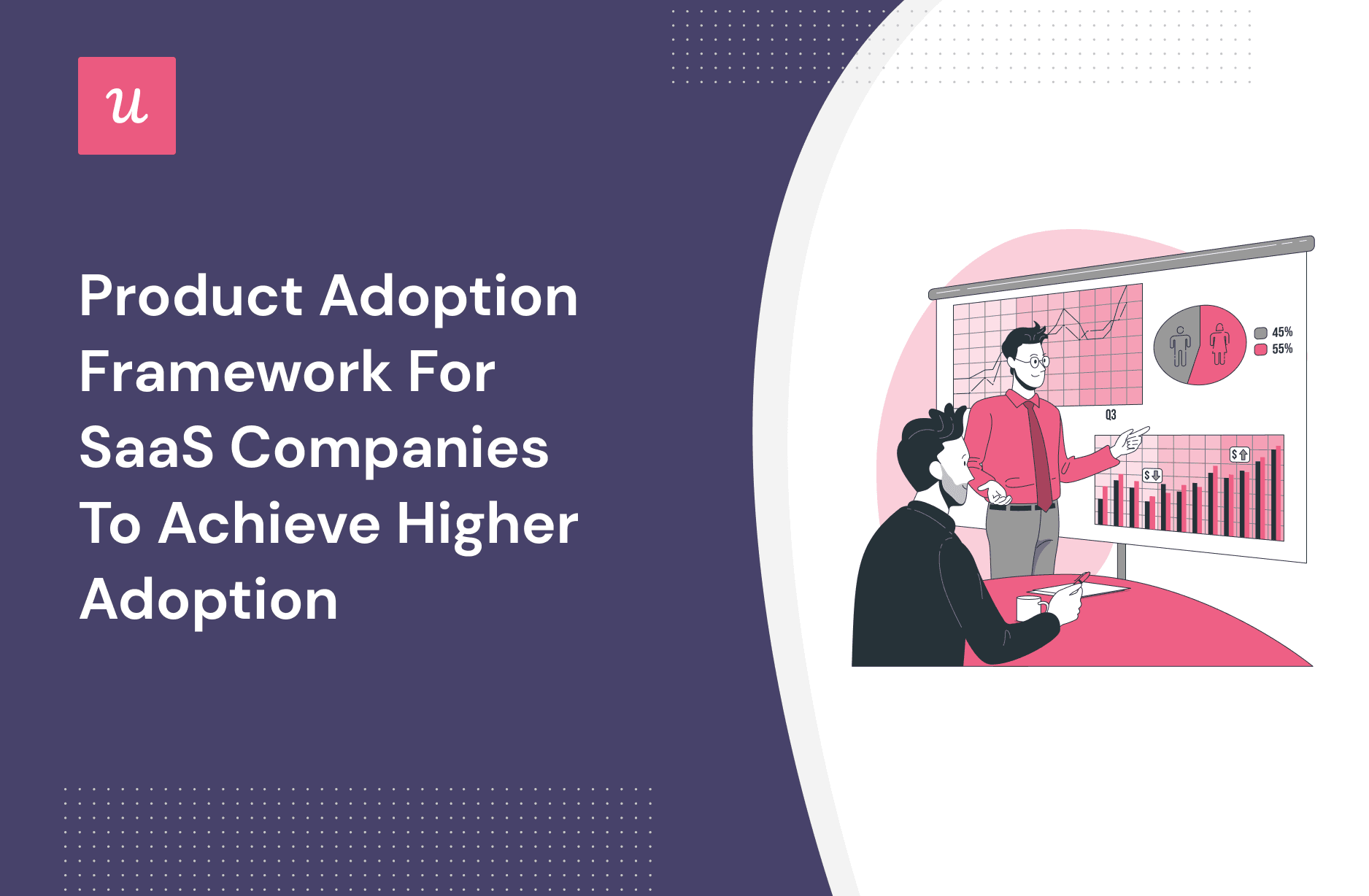
Any product manager should understand the power of a product adoption framework as it can transform their ability to help users get value from their product and achieve their goals.
We’re going to unpack what adoption is, why it matters, how to measure it, the strategies you can use to improve it and share the right tool for the job.
Ready to get started? Let’s dive right in!
Try Userpilot Now
See Why 1,000+ Teams Choose Userpilot

What is product adoption?
Product adoption encompasses the complete end-to-end journey of someone interacting with your product, from early interest to awareness to a free trial, and beyond.
A user is typically considered to have reached ‘adoption‘ when they move past the trial stage and actually start paying for your services. They’re obviously getting enough value to warrant spending their hard-earned cash.
What is a product adoption framework?
A product adoption framework is a multifaceted set of tools, tactics, rules, metrics, and more, all designed to help boost your adoption rate and increase user engagement.
Why is the product adoption process important?
You’ve got a million things on your to-do list. Should you really spend your time increasing product adoption? Here are a few key reasons to consider:
- Reduces your churn rate: Churn (customers leaving your product) is inevitable. But it’s still something you want to avoid wherever possible. Increasing adoption means more users are understanding the value your product is offering – and the more value they get, the less likely they’ll leave.
- Turns customers into your best marketers: The product adoption process, when done right, increases customer delight. Why? Because you’re helping them solve their problems consistently, and justifying the money they’re spending. It’s only natural they’ll want to spread positive word of mouth and become an advocate for your product.
- Boosts expansion revenue: At the end of the day, adoption helps improve your bottom line too. A higher adoption rate gives you greater opportunities to expand your revenue. Users who are realizing value will be far more likely to respond positively to upselling opportunities (i.e., expanding their accounts).
What are the six product adoption stages?
Product adoption is a complex process, and there are multiple stages your customers will need to move through in order to reach adoption. Let’s break down what each of the steps entails.
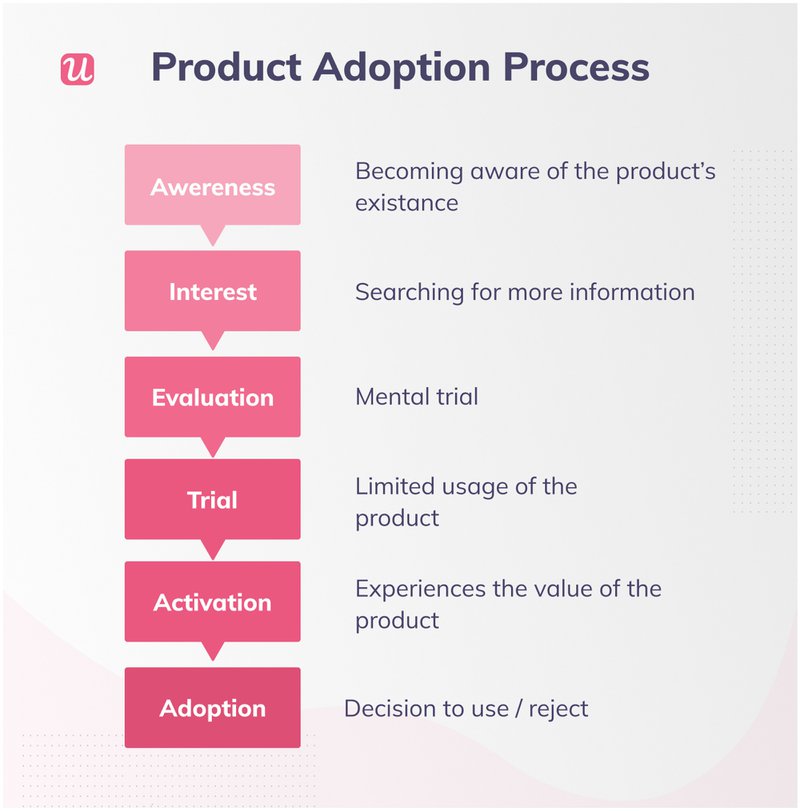
- Awareness: This stage is about making your potential customers aware of your offering. Your customers can’t adopt a product if they don’t know what it is!
- Interest: Users move onto this stage when they start thinking about how your tool can help them with their jobs to be done and tackle their pain points. They’ll typically start gathering enough information to make a decision.
- Evaluation: At this point, your potential customers will start seriously evaluating their choices, thinking about the pros and cons of each.
- Trial: Users will now start actively testing whether your product meets their needs. They could do that in a number of ways: a trial (free or paid), a demo, or just start paying right away.
- Activation: Finally, your users experience value for the first time. Activation is important because without delivering product value, your customers simply won’t pay for it.
- Adoption: Once a user has reached the activation point, they’ll make a decision on whether they will use your product more permanently or switch to another tool.
What is the product adoption curve?
Before you start thinking about how to improve adoption, you need to understand that not everyone will adopt your product at the same rate. A great way to build that understanding is learning about the product adoption curve and where different groups of customers sit on it.

- Innovators: These are the gutsy risk-takers willing to give new things a go and experiment with new products. Innovators make up just 2.5% of the market and represent the very first tip of the curve.
- Early adopters: They comprise a larger share of the market, approximately 13.5%. Typically, they are trying to solve a real problem and are less experimental than innovators. Along with that, they’ll expect a more reliable, less ‘early stage’ service.
- Early majority: They describe a whopping 34% of the market. Higher up the adoption curve, these sorts of customers value certainty, stability, and consistency about the products they use. Because of that, they’ll also typically make slower, more informed decisions.
- Late majority: This cohort (another 34%) is much more conservative than the previous group (especially compared to innovators). They will not actively seek out change and would rather not experiment for the sake of it. They will only adopt new technology out of necessity.
- Laggards: These are the group of customers most resistant to change, and sit right at the end of the curve (the final 16%). They will only adopt a product when they have absolutely no other choice.
How can product teams measure product adoption?
We’ve covered why product adoption is important, the steps in the process, and the adoption curve. But how do you measure it? Let’s dive in.
Monitoring key product adoption metrics
There are several key product metrics that’ll help give you a rounded understanding of how product adoption is going.
- Activation rate: The ratio of users who’ve reached the activation point (i.e., experienced value). It is calculated by dividing activated users – as you’ve defined activation – by the total signed-up users over a period of time.
- Time to value: How long does it take your users to experience value? That time measure is your time to value (or TTV).
- Feature adoption rate: The percentage of your users who have adopted (i.e., regularly using) a specific feature.
- User engagement score: How engaged your customers are? Gather feedback directly and aggregate it to build an accurate view.
- Customer lifetime value: The total revenue a customer brings you over their entire customer lifecycle.
Tracking product analytics
Using the right product analytics tool can help build up a detailed picture of user behavior. There are many different options at your disposal.
Feature and event tracking
Feature tracking gives you a detailed view of how feature adoption is going. By understanding which features are popular and which are unpopular, you can tweak your product adoption strategy accordingly.
Event tracking switches the view. Rather than focusing on individual features, it lets you define the key events a user needs to go through in order to reach adoption. You can then analyze user activity and figure out where you need to focus your efforts and make improvements.
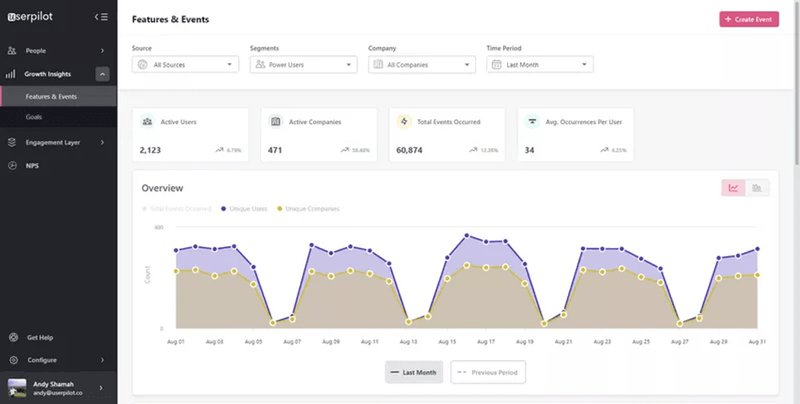
Customer journey analysis
By monitoring how users progress along the customer journey, you can build empathy and understanding about what blocks them and use this information to create a frictionless customer experience.
Retention analysis
Showing your users value in the first place is one thing but doing it consistently and keeping hold of them (i.e., retention) is another.
Conduct retention analysis by looking at distinct cohorts of new users (a time-bound sort of user segment) and identify where in the process they might be churning. Understanding that will help you craft a more effective product adoption strategy.
Customer feedback analysis
Gather and analyze customer feedback to identify trends, gauge satisfaction, and work out areas for improvement. Feedback will also help personalize the customer experience and boost the chance of successful adoption.
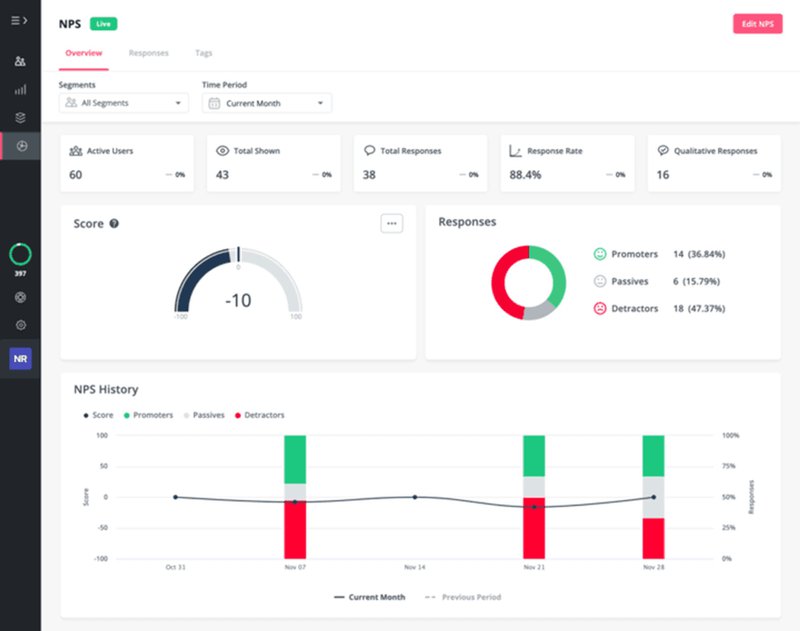
Heatmaps
A heatmap is a visualization of how users are interacting with your user interface, using colors to show ‘hot’ (i.e., popular) areas. They’re useful for figuring out which parts of a product are used most frequently – and therefore are the most popular.
There are many types of heatmaps to choose from: feature click maps, hover maps, eye-tracking maps, and scroll maps. They can all help you and your team make targeted improvements.
Session recordings
Session recordings let you watch back a video of a user interacting with your product; it’ll show you which features they’re using, how they’re using them, which features are working for them, and most importantly which areas of the product they’re struggling with.
Strategies to implement for increasing product adoption
Once you’ve measured adoption, you’re in a prime position to start improving the product adoption rate. Now, we’ll define some actionable strategies you can use within your own product.
#1 – Keep the sign-up page simple and short
Your primary objective during signup should be to get potential customers into your product as quickly – and smoothly – as possible. The less friction on the way, the shorter their time to value (and the better your adoption rate).
Simply tweaking the design of your sign-up page can have a huge impact.
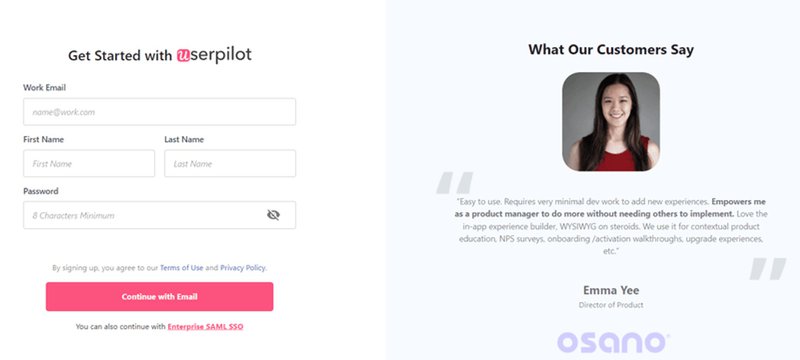
#2 – Personalize the onboarding flow for different user segments
Personalization is proven to boost user engagement and product adoption. It helps create a smooth pathway to experiencing the value of your product. You can personalize in many ways, based on distinct use cases, specific pain points, user roles, demographic information, and more.
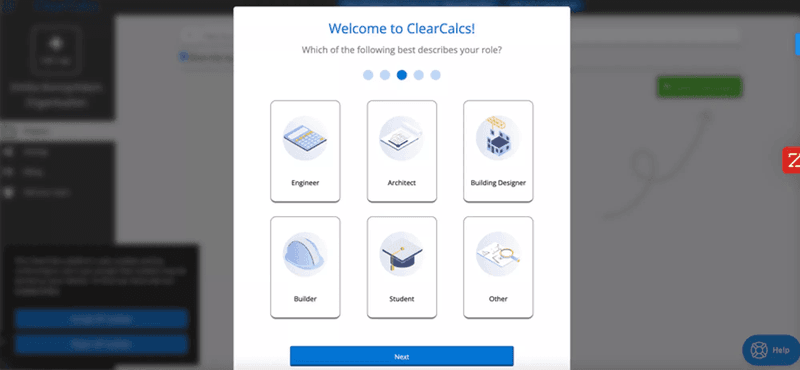
#3 – Include onboarding checklists to increase activation rates
Onboarding checklists guide users through the product setup process one step at a time. By taking users on a clear and structured path to value, you give them the best chance of completing onboarding and understanding how to navigate the most complex of features.

#4 – Use secondary contextual onboarding to showcase product value
Secondary onboarding is an important next step. You must demonstrate consistent value over time, rather than rely on basic features to do the job as your users adopt your product.
Providing contextually relevant prompts can help ‘nudge’ your users toward more advanced functionality and deepen the adoption experience.

#5 – Reduce friction points from the product adoption journey
Friction is anything that blocks your users from completing their objectives – friction points slow them down and could ultimately lead to churn.
There are a few different types of friction to be aware of:
- Emotional: When the user feels overwhelmed.
- Cognitive: When the interface is confusing or unintuitive.
- Interactive: When something on your page doesn’t work as expected (either a bug or poor design choice).
Make sure you use product analytics to identify and remove friction points: it’s a key part of the product manager skillset.
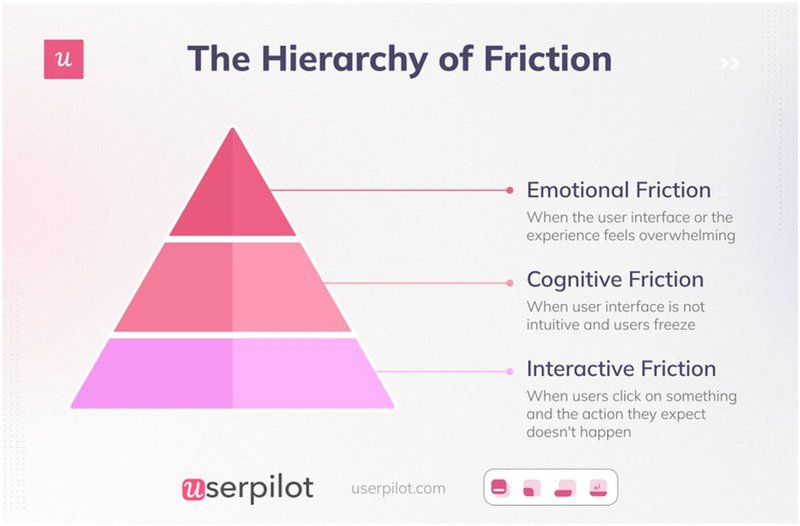
#6 – Analyze the user behavior of power users and create a happy path
Powers users are your best users.
Analyze their behavior, learn from them, and map out the steps they take in adopting your product. It’s then relatively simple to draw out a repeatable framework or flow to create a happy path for new customers to venture down.
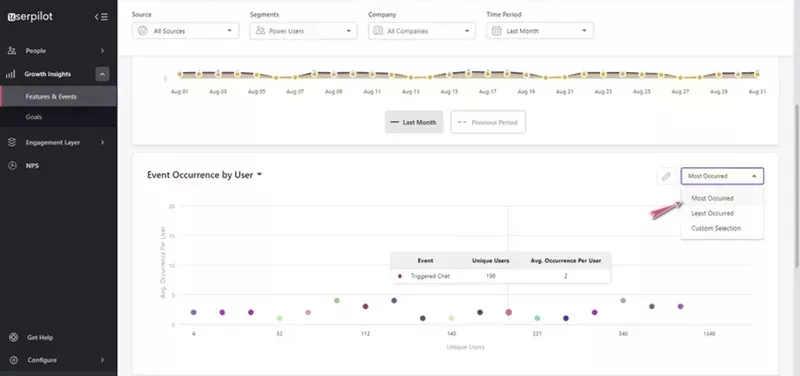
#7 – Improve product adoption through A/B testing
A mindset of iteration and hypothesis-driven development can lead you to much higher adoption. Rather than rely on guesswork, you can use actual data gathered during experiments and A/B tests to make informed product decisions regarding improving adoption.
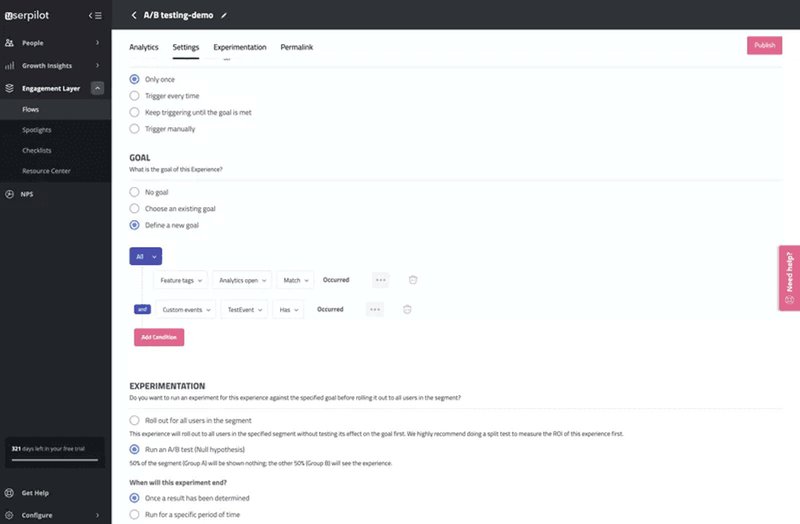
How can Userpilot help execute your product adoption framework?
It goes without saying that none of this is possible without the right tool for the job. One of the best options on the market is Userpilot, a powerful and complete digital adoption platform.
Userpilot makes it simple to analyze user behavior, collect customer feedback, and boost product engagement with engaging in-app experiences.
Some of Userpilot’s key features include:
- Analytics: Dive deep into user behavior with a range of analytics.
- Segmentation: Don’t treat your users as one homogenous group: understand core customer segments and adjust the product experience to their needs to drastically improve adoption.
- In-app messaging: Choose from a vast range of UX patterns (modals, tooltips, slideouts, etc.) to deliver effective in-app messaging to help your users unlock value.
- Mobile Capabilities: Onboard and engage mobile app users by creating personalized messaging, push notifications, and surveys with Userpilot.
Conclusion
That just about wraps up our comprehensive guide to the world of adoption. You should now have a solid understanding of:
- What adoption is and why it matters
- How to measure it
- Tactics to improve it
- The best tool for the job
Want to build product experiences code-free? Book a demo call with our team and get started! Check out the banner below for more information.





